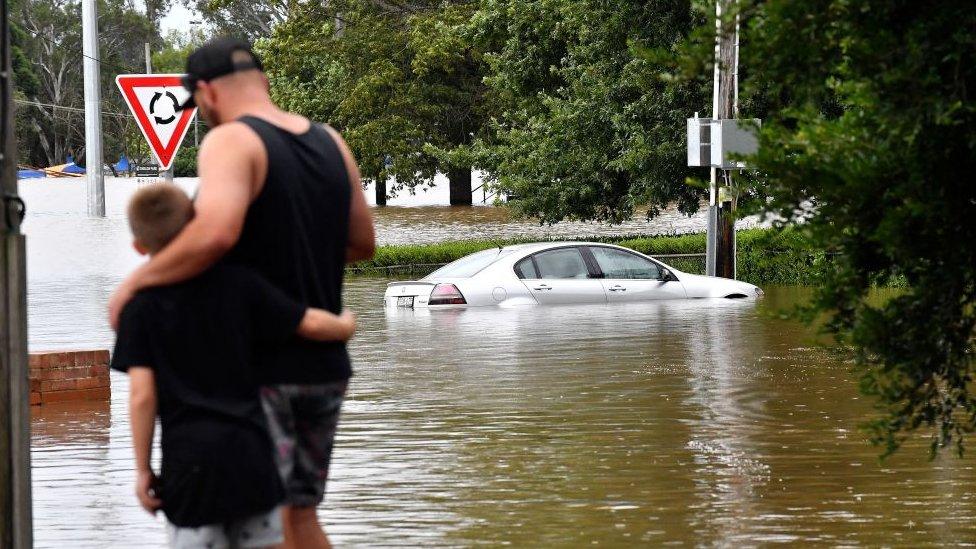Sydney floods: Two killed and thousands forced to evacuate
- Published
Sydney lashed by torrential rains and flash floods
Tens of thousands of Sydney residents have been told to evacuate their homes as floods ravage eastern Australia.
In the past fortnight, New South Wales (NSW) and Queensland have been pummelled by heavy downpours that have caused floods and killed 20 people.
The threat has now intensified in Sydney, which has been hit by widespread flash-flooding.
Two bodies - believed to be of a woman, 67, and her son, 34 - were found in a Sydney canal on Tuesday.
Police said their deaths would be investigated, but noted the canal had risen "from ankle-deep to above neck height in a matter of minutes".
NSW Premier Dominic Perrottet said 40,000 residents in the state had been ordered to evacuate, and another 20,000 people were on standby.
He added that a dam in the suburb of Manly had begun to spill, and a flooded river was threatening lives in the city's southwest.
There was also a "substantial catastrophe" in the state's north, where more than 800 people had been placed in temporary accommodation.
The State Emergency Service said more than 2,500 people had requested help in the past 24 hours. Australian Defence Force soldiers have also been deployed.
"The best thing you can do right across our state is follow those instructions and please do not drive through flood waters," Mr Perrottet said.

Authorities warn rain is likely to cause more flooding
He warned flash-flooding was likely to continue on Wednesday.
Experts say the flooding emergency has been worsened by climate change and a La Niña weather phenomenon. A La Niña develops when strong winds blow the warm surface waters of the Pacific away from South America and towards Indonesia. In their place, colder waters come up to the surface.
In Australia, a La Niña increases the likelihood of rain, cyclones and cooler daytime temperatures.

Roads become rivers
Phil Mercer, BBC News in Sydney's Northern Beaches
The wailing sirens can just about be heard above the incessant drumbeat of rain on the roof and an angry wind.
Roads have become rivers as Sydney is battered by another mammoth storm. For 16 consecutive days, it has rained, and more is on the way.
On the Northern Beaches, friends ask for sandbags to protect their home as a reservoir overflows, but hundreds of people have been told to leave.
Images posted online show high school children watching in disbelief as cars float away outside. Bookended by the Pacific Ocean on one side and the harbour on the other, parts of the seaside suburb of Manly have been swamped.
Australia's biggest city had had its wettest summer in 30 years. About 4,000km away, Perth - the Western Australian state capital - has been sweltering through its hottest summer on record.
This is a vast country that's well used to nature's extremes, but many Australians will be asking: what will happen next?